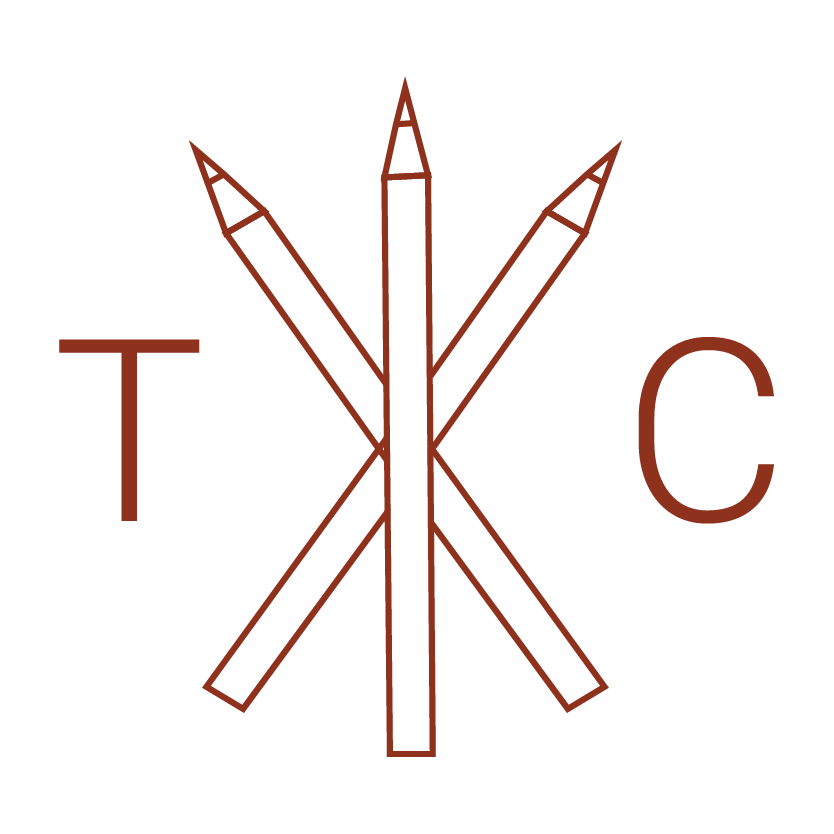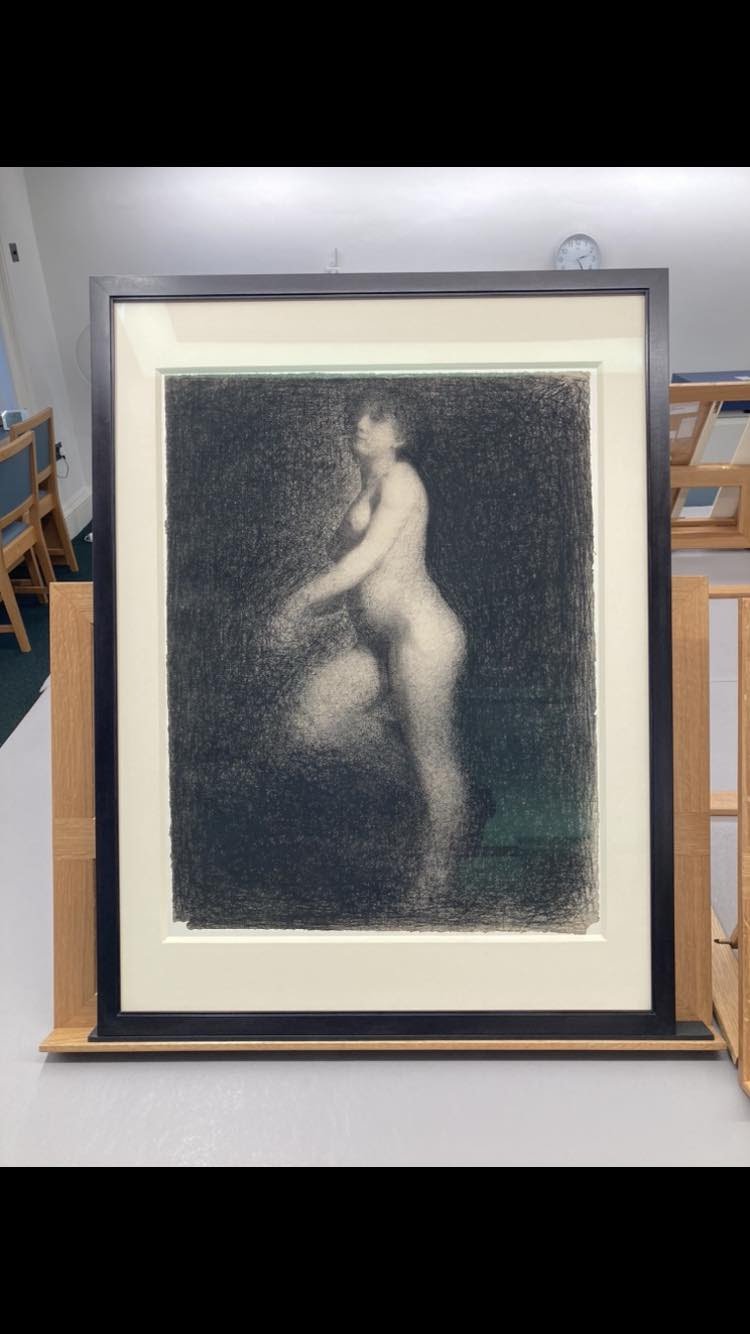October 2023
Sunday, October 1
Trois Crayons (French, "three crayons") The technique of drawing with black, white and red chalks (à trois crayons) on a paper of middle tone, for example mid-blue or buff. It was particularly popular in early and mid-18th century France with artists such as Antoine Watteau and François Boucher. (Clarke, The Concise Oxford Dictionary of Art Terms)
Coming Up
Dear all,
First and foremost, a warm welcome and a heartfelt thank you to all subscribers to this new monthly newsletter. Trois Crayons is a celebration of the art of drawing in all its forms, with a particular, but not exclusive, focus on European artists of the 15th to 20th centuries. The newsletter is the first of many Trois Crayons initiatives in production with a podcast, calendar and attribution forum set to be released in the coming months. The newsletter aims to bring together the people, events and resources that make up the world of drawings, through interviews with curators and conservators, a calendar for talks and exhibitions, recommendations of subject-relevant resources, a series of introductory explainers and much more.
For this month’s edition we have picked out 10 current events from across the UK and around the world, taken a trip to the Courtauld’s Print Room, spoken with Rosie Razzall at the Museum Boijmans Van Beuningen about her favourite drawing, reviewed Leighton House’s exhibition of Evelyn de Morgan’s gold drawings, and recommended a selection of literary and audio highlights. Test your inner connoisseur with the real or fake section.
As we develop our programme, readership and format, your recommendations, comments and event listings are welcomely encouraged. Please direct any feedback to tom@troiscrayons.art.
uk Exhibitions
other locations Exhibitions
Drawing of the Month
Rosie Razzall, Curator of Drawings at Museum Boijmans Van Beuningen in Rotterdam has kindly chosen our first drawing of the month
Pisanello (Antonio di Pucci Pisano) (c. 1395-1455)
Four studies of a female nude, an Annunciation and two studies of a woman swimming
Pen and ink on parchment, 223 x 167 mm, Loan: Stichting Museum Boijmans Van Beuningen 1940 (former collection Koenigs)
“What a difficult task choosing my favourite drawing from the collection of Museum Boijmans Van Beuningen. But I found that I kept coming back to a drawing that I’ve become very familiar with in the last few months, Pisanello’s beautiful sheet dominated by the study of four nude women.
It felt appropriate for this first issue of the newsletter to choose a drawing that sits on the cusp of new beginnings, as well as at the very edge of our parameters as scholars and specialists in drawing. It’s one of the earliest drawings in the museum’s collection, and as such is on parchment rather than paper. The sheet is a page from a drawing book that was passed around the students in Pisanello’s workshop. While the motif of the Angel and Virgin looks back to the copying practices of the medieval workshop, the nude studies below signal a new interest in the human figure. These are probably among the earliest female nude studies in existence, something that still gives me a burst of amazement every time I look at the sheet.
The muscles, hair and feet of these figures are minutely and carefully recorded. In the upper corner are two female swimmers, a highly unusual and intriguing subject for such an early date.
As the swimmers’ faces have been copied from those of the women below, and their limbs sit quite awkwardly in the water, it’s possible that Pisanello invented these figures rather than drawing them from life. This means that all on the same sheet we can witness observation from life, the making of copies, and drawing from the imagination. These three approaches to the making of drawing essentially remained, often interacting with each other, for the next 500 years. Thinking about them still forms the starting point for much of our art historical scholarship on drawing.”
Reviews
Evelyn De Morgan: The Gold Drawings
Leighton House, London, reviewed by Nigel Ip (Print Quarterly)
Evelyn De Morgan: The Gold Drawings is the latest free exhibition to grace the new Tavolozza Drawings Gallery at Leighton House. Few Victorian artists experimented with metallic pigments, notably Edward Burne-Jones, and only 17 gold drawings by Evelyn are known, encompassing Christian and mythological imagery inspired by the Italian Renaissance. 14 are presented here from the De Morgan Foundation and Leighton House collections. The initial group of studies for The Marriage of St Francis and Holy Poverty (1902) eloquently introduces Evelyn’s working method. Using a nude life model for the figure of St Francis, she first sketched out his movements in black and white chalks, then created a clothed version with the saint’s accoutrements. Two further sheets explore his hooded head and sandalled feet using coloured pastels.
But for the final piece – a response to Giotto’s frescoes in Assisi – every figure and surface is draped in heavenly gold pigment. Evelyn ground up these so-called ‘cakes of gold’ to create bespoke gold paint and crayons. Paired with dark grey paper, the sculptural effect mirrors Andrea Mantegna’s grisailles in the National Gallery.
Evelyn made her luxurious gold drawings as independent works of art, the most spectacular of these being Gloria in Excelsis (1893) and Victoria Dolorosa (1900). Here, black chalk has been employed in the recessed grooves of armour, drapery, and wings to further accentuate the gilt subjects’ otherworldly qualities and add extra depth to the image. The result is impeccable draughtsmanship given the Midas touch.
Demystifying Drawings
How To: Visit a Print Room
First and foremost, what exactly is a Print Room?
A Print Room is a room in a museum, gallery or library where works on paper can be viewed upon request. Museums cannot overexpose their drawings to light and so they are often kept in carefully controlled conditions and safely stored within boxes inside a Print Room. Although the drawings may be stowed away, they are not inaccessible. In fact, arranging to see a drawing by Rubens or Picasso is a lot easier than you might think. It’s also completely free.
Drs Ketty Gottardo and Rachel Sloan, curator and assistant curator of works on paper at the Courtauld, have kindly walked us through the process for using their Print Room.
Step 1
Search the museum’s digital collection
Step 2
Choose approximately 10 drawings to view.
Step 3
Email a list to printsanddrawings@courtauld.ac.uk with preferably a week’s notice to arrange a viewing time.
Step 4
Turn up at the arranged time and enjoy!
“ You’ll be delighted to discover works by a broad range of artists from Michelangelo and Rembrandt, to Cezanne, Vanessa Bell and Auerbach. The intimate space of the Study Room will surely conquer you, the perfect place to enjoy a close encounters with famous and lesser known drawings. Come as you are, we’ll lend you a pencil if you forgot it!”
Remember to bring an official form of identification to your first appointment. Photography is allowed for personal use.
Real or Fake
Can we fool you? The term “fake” may be slightly sensationalist when it comes to old drawings. Copying originals and prints has formed a key part of an artist’s education since the Renaissance and with the passing of time the distinction between the two can be innocently mistaken.
Less innocent however are the owners who have bought copies and miraculously sold them as originals. Equally culpable are the artists whose intention it has always been to deceive. Famous examples include the 18th Dutch artist Karel la Fargue, whose copies after Old Masters contained counterfeit signatures, and the 20th century British forger Eric Hebborn, who claimed to have made over 1,000 drawings in the style of Old Masters, many of which are still in circulation today. Caveat emptor!
So, can you tell which is the original here and which is the copy? For a bonus point: name the artist and the sitter. Scroll to the end of the newsletter for answers.
Resources and Recommendations
to listen
Mark Gatiss: in search of John Minton
In 2018 Thomas Marks sat down with Mark Gatiss, star of stage and screen, to discuss the life and reception of the modern British artist John Minton. Minton was one of the leading figures of postwar British art, a haunter of Soho pubs along with his friends Bacon and Freud, and one of the most highly gifted illustrators of the 20th century.
to watch
Almost Invisible: The Cartoon Transfer Process
Curators at the Getty dive into the deep end of the 15th and 16th centuries, explaining the ingenious practice of using cartoons (large scale preparatory drawings) to transfer the drawn image from paper onto canvas or wool. Drawing allowed for greater experimentation and refinement of a design than painting and thus formed a key creative stage in the artistic process.
to read
Drawings by Elisabetta Sirani and Properzia de’ Rossi
Jacqueline Thalmann examines four drawings in the collection of Christ Church, Oxford, attributed to Bolognese women artists. Old Master drawings by women artists are rarer than those of their male counterparts, not least because women artists were less numerous than men, but also, as Thalmann observes, because they were often omitted from literary sources, and the term disegno (literally – ‘drawing’) was commonly associated with the male brain.
answerS
REAL OR FAKE
The original, of course, is on the right (the lower image if you are viewing on mobile). It is held in the Staedel Museum, Frankfurt (inv. no.: 789 Z).
Bonus Point: The artist is Sir Anthony van Dyck and the sitter, his fellow artist, Adam de Coster.
On the left “an early copy after the original in Frankfurt which is a study for the portrait engraved by Pieter de Jode” British Museum, London (inv. no.: 1895,0915.1071)








